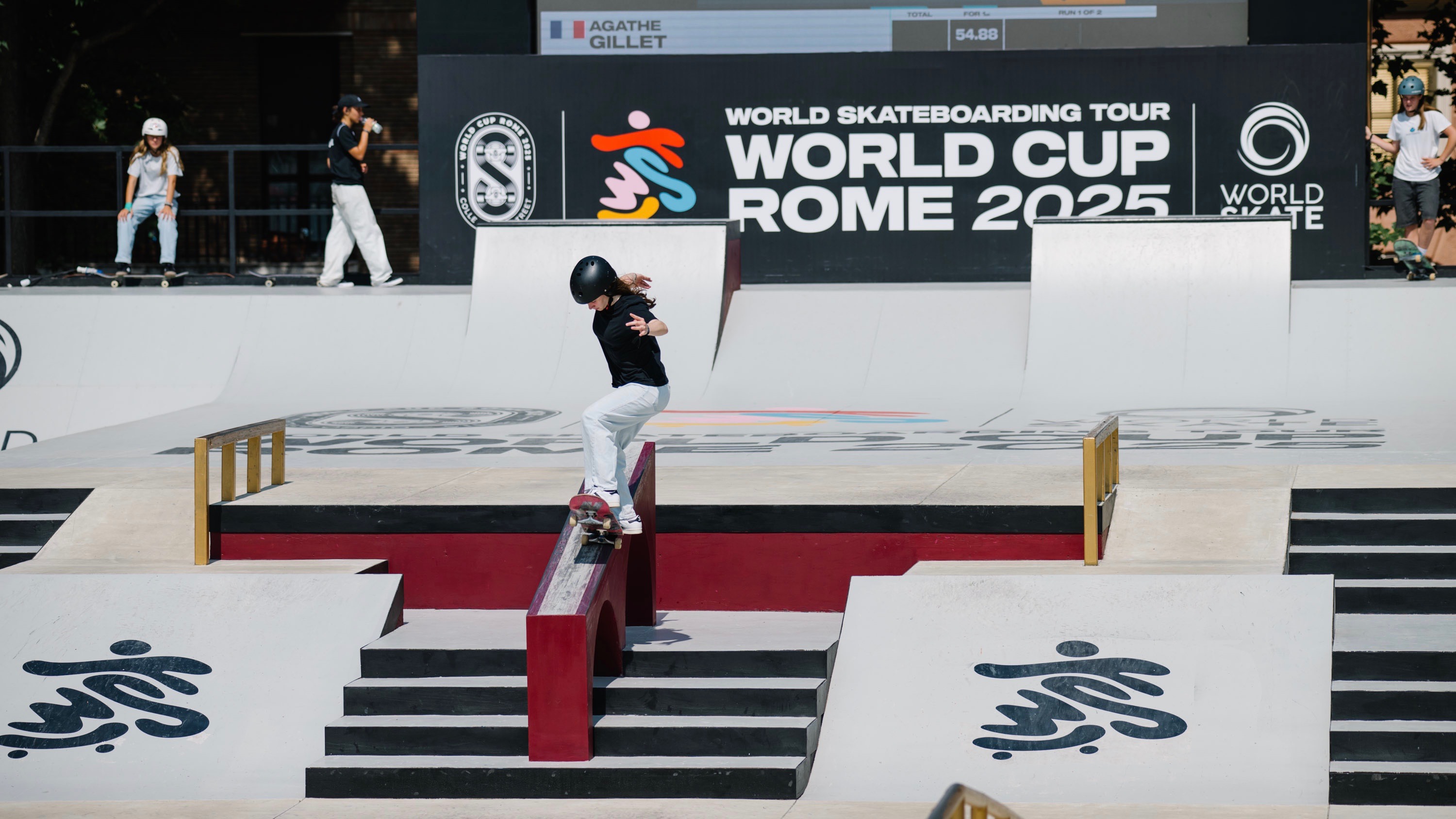After all the brouhaha with the 900’s and all that jazz in Ostia at the weekend, we are straight into Street here at Parco Colle Oppio in downtown Rome.
The streets are thronged with tourists trying to fit the Colosseum into the background of a selfie, the ice-cream guys are Googling second-hand Ferraris, and 177 skateboarders from around the globe are signed in and registered to rip.
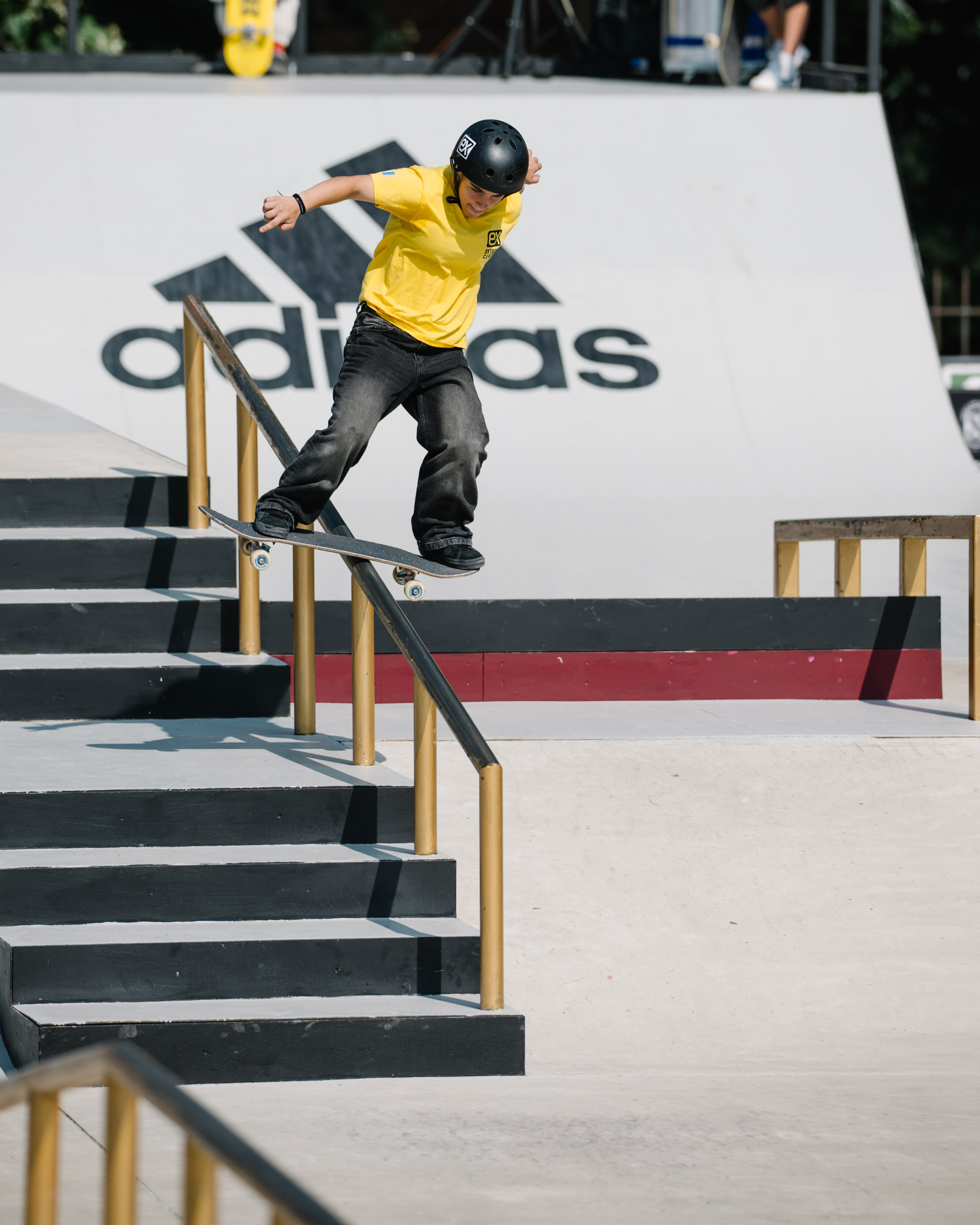
Just because I have the stats to hand: 115 of those skaters are men and 62 women; 45 nations are represented including for the first time the UAE- so welcome to them, here.
With the obvious success of last week’s Park format switch-up, we are interested to see how the Street format changes (three Best Tricks instead of five, three runs in Finals, best score from each combines, no ability to scratch sketchy Best Trick makes by X-ing them out)- will impact the outcome of this week’s finals action.
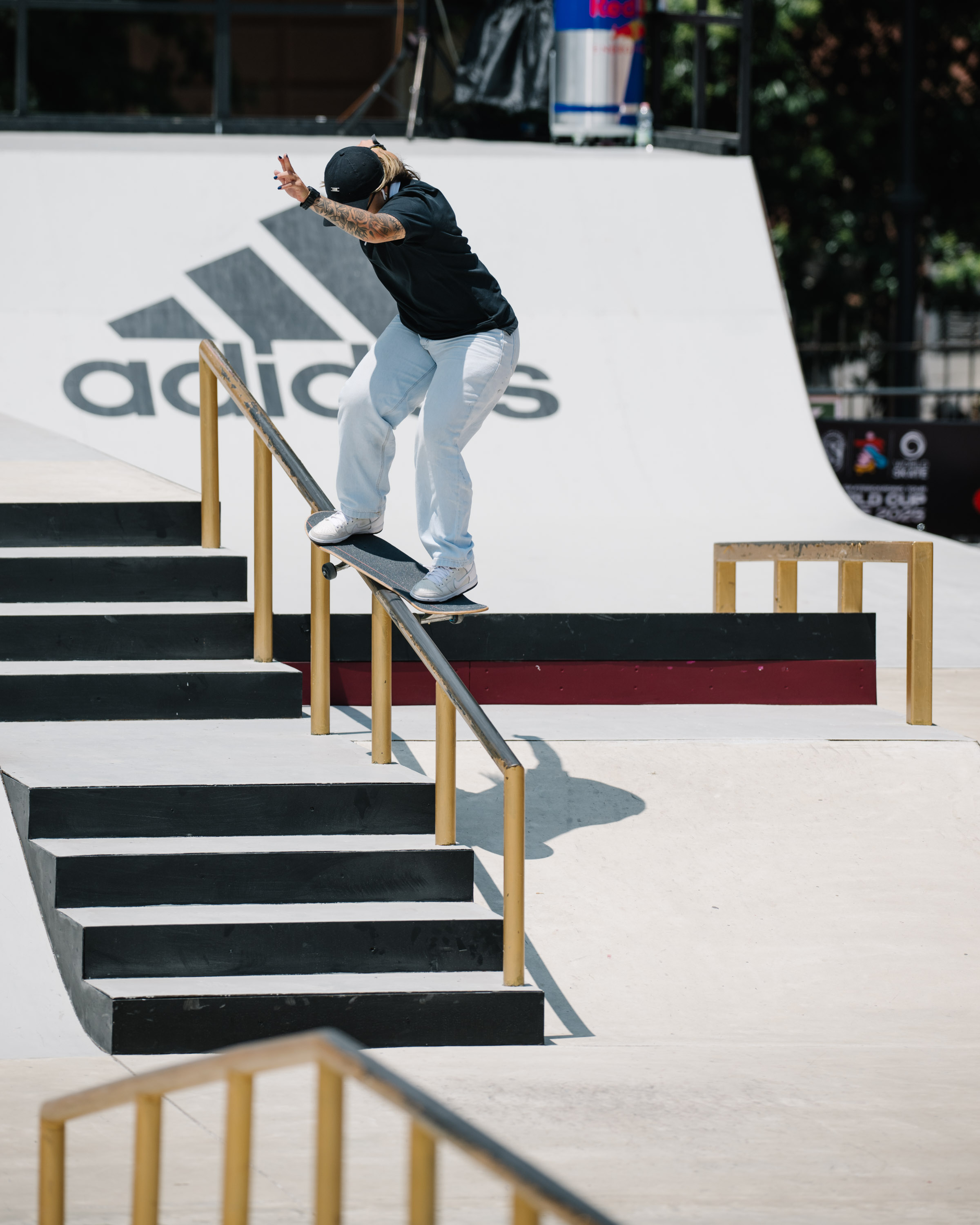
The question this begs, naturally enough, is why change the format at all?
Well, without getting too data-ish on you, it became clear over the course of 2024 that at the elite level, the two-run format has one inherent challenge within.
Competitive street skateboarding theory or strategy or call-it-what-you-will has arrived at a consensus which is that you try to bank a solid but possibly unspectacular first run to get your score off the baseline.
If you achieve that, then you can try to wild out a bit more on the second.
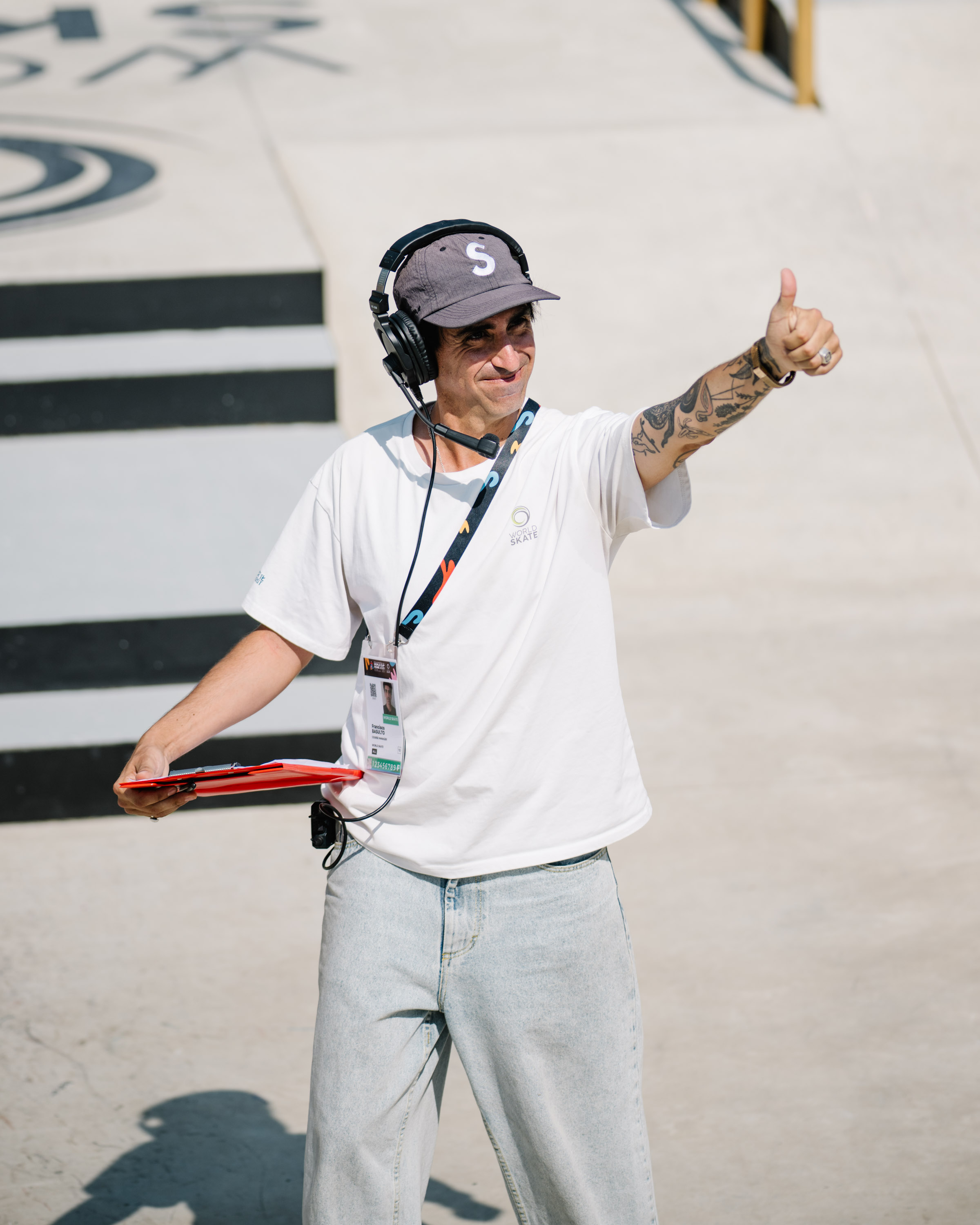
However, if that doesn’t happen- and skateboarding is more art than science so it happens even to the best fairly often- you are left with a quandary: either re-try the banker line and go into Best Trick with something middling on the scoreboard, or go hell for leather and risk coming dead last regardless of how you fare in Best Trick because only 2 of those scores can count (Best Run + Best Trick) come what may.
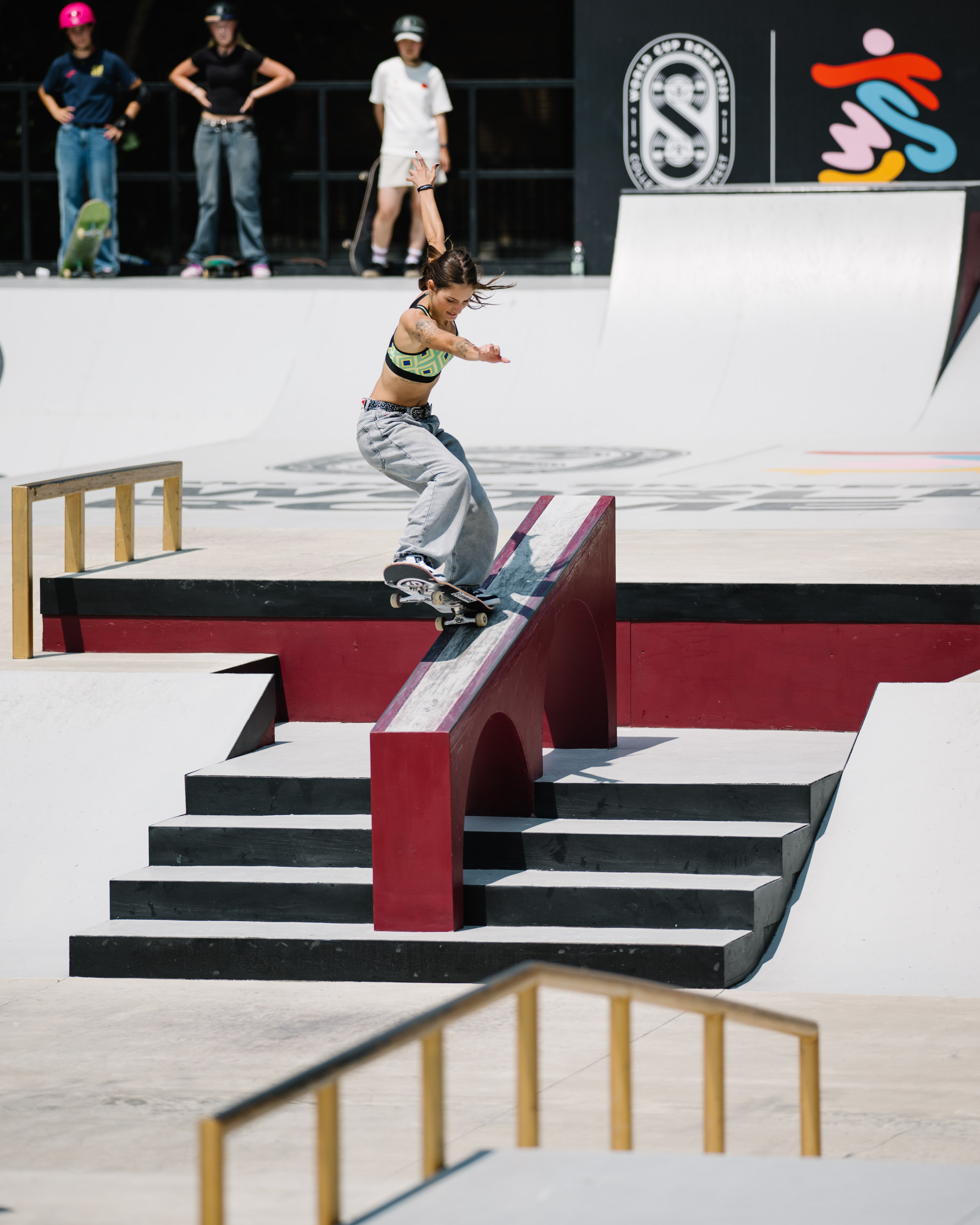
At the elite level of skateboarding, the chances of overcoming even a comparatively small 10-point deficit are vanishingly small- the highest Best Trick score in Womens so far is 96.12 (Coco Yoshizawa, OQS Budapest) and Mens, 97.10 (Yuto Horigome, same contest).
By comparison, there have only ever been 13 male run scores in excess of 90 ever recorded, and 5 for women.

So it seems clear that for the Finals, the Run section might be where the in-play dynamic of the contest might be spiced up and allowed to evolve somewhat. With 3 runs, you can bank, gamble- or gamble and bank, or any variation thereof (if you can’t complete a run in 3 attempts in the international top flight then insert shrug emoji here, I guess?).
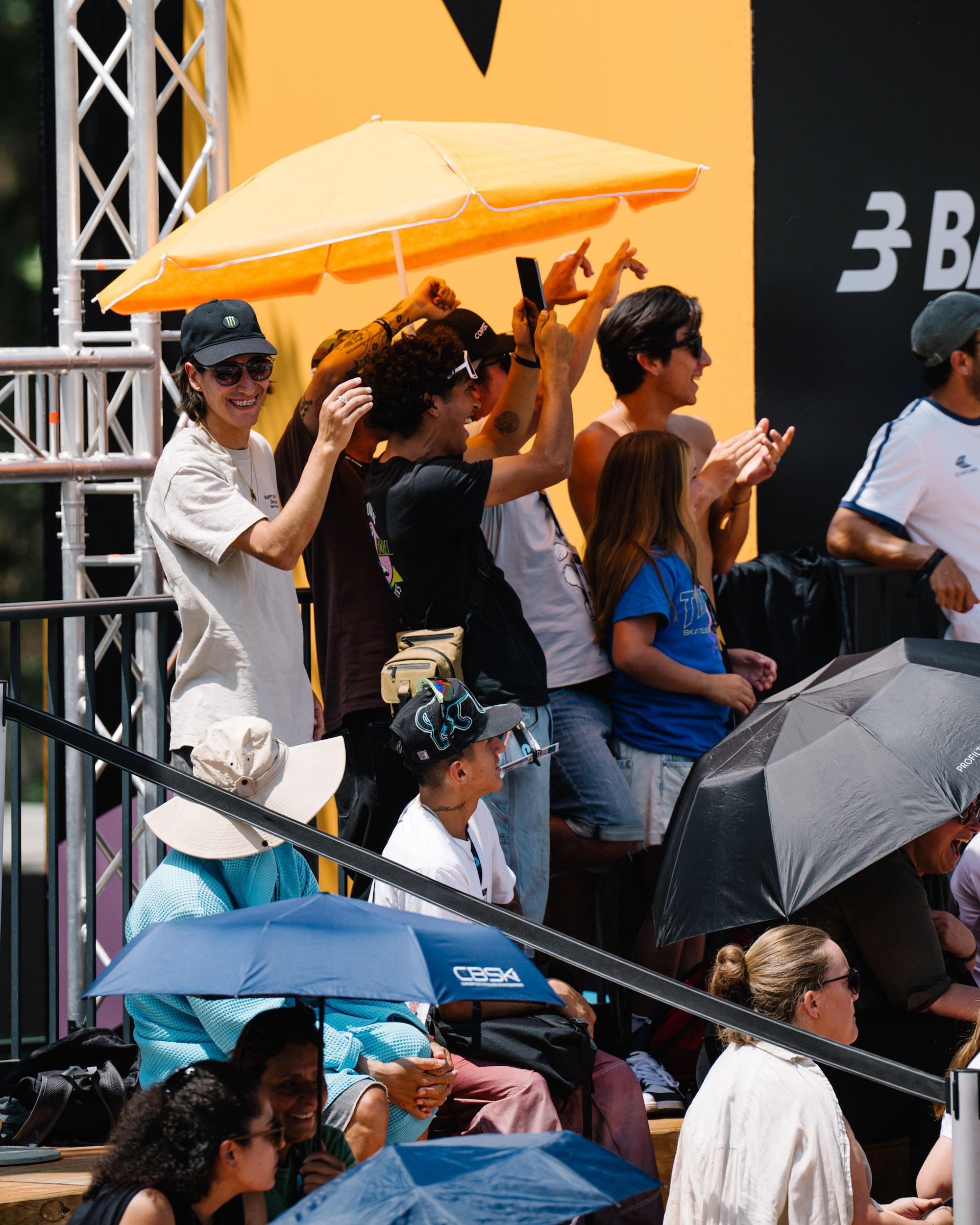
Bear in mind, this is not the word of the Almighty passed down to the skateboarding world; these are just format tweaks attempting to create new in-play dynamics for everyone involved.
Everything will be monitored and reviewed and discussed as always with competitors, coaches and federations as it becomes clearer over time what works and what doesn’t.
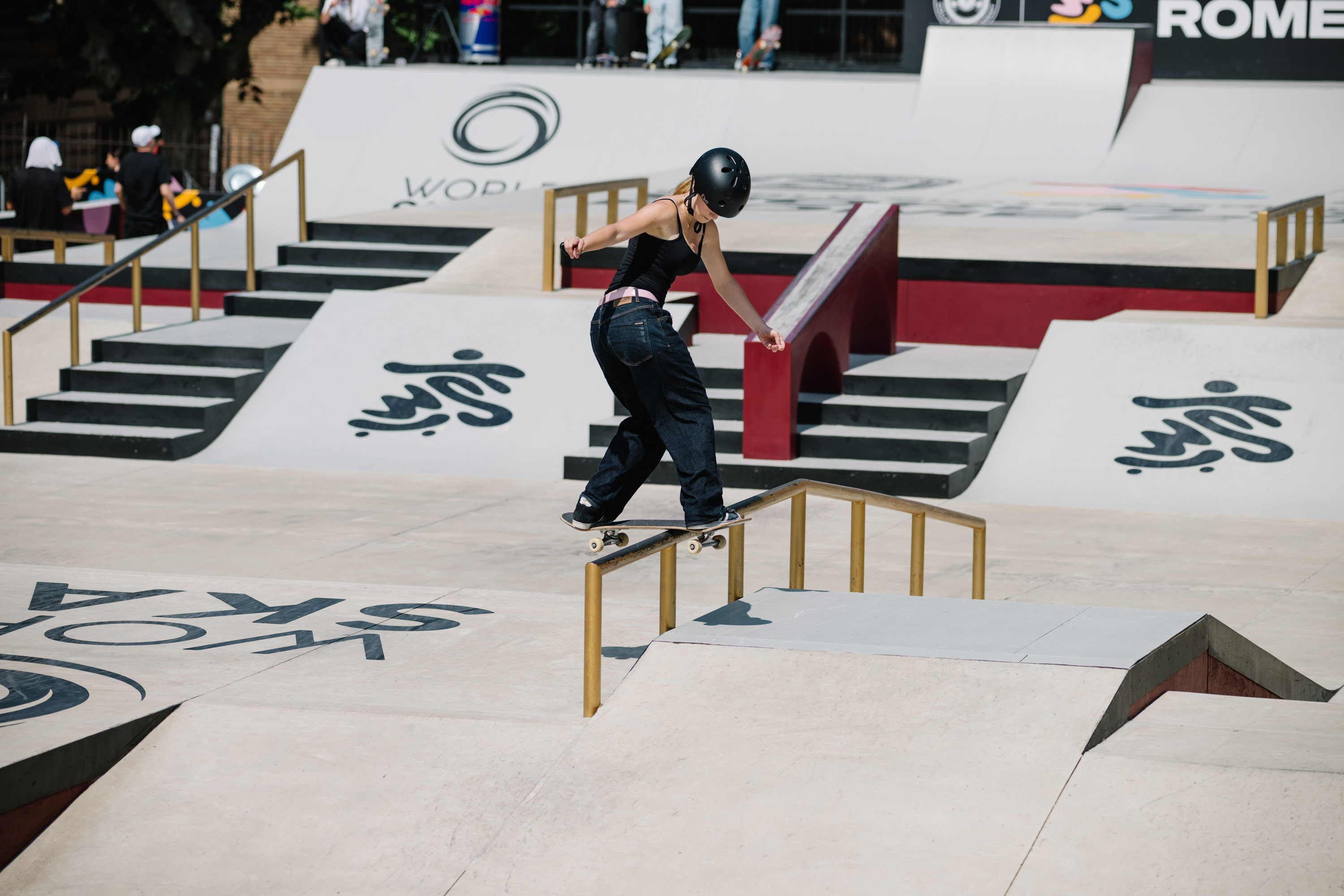
Skateboarding never sleeps, and we are super excited to see how new strategies and talents emerge as this WST Rome Street 2025 week progresses.
All of which is a roundabout way of saying: here are the Women’s Qualifier results from another beautiful day in the Eternal city. Each skateboarder had two 45- second attempts to show what they could do when the spotlight was on.
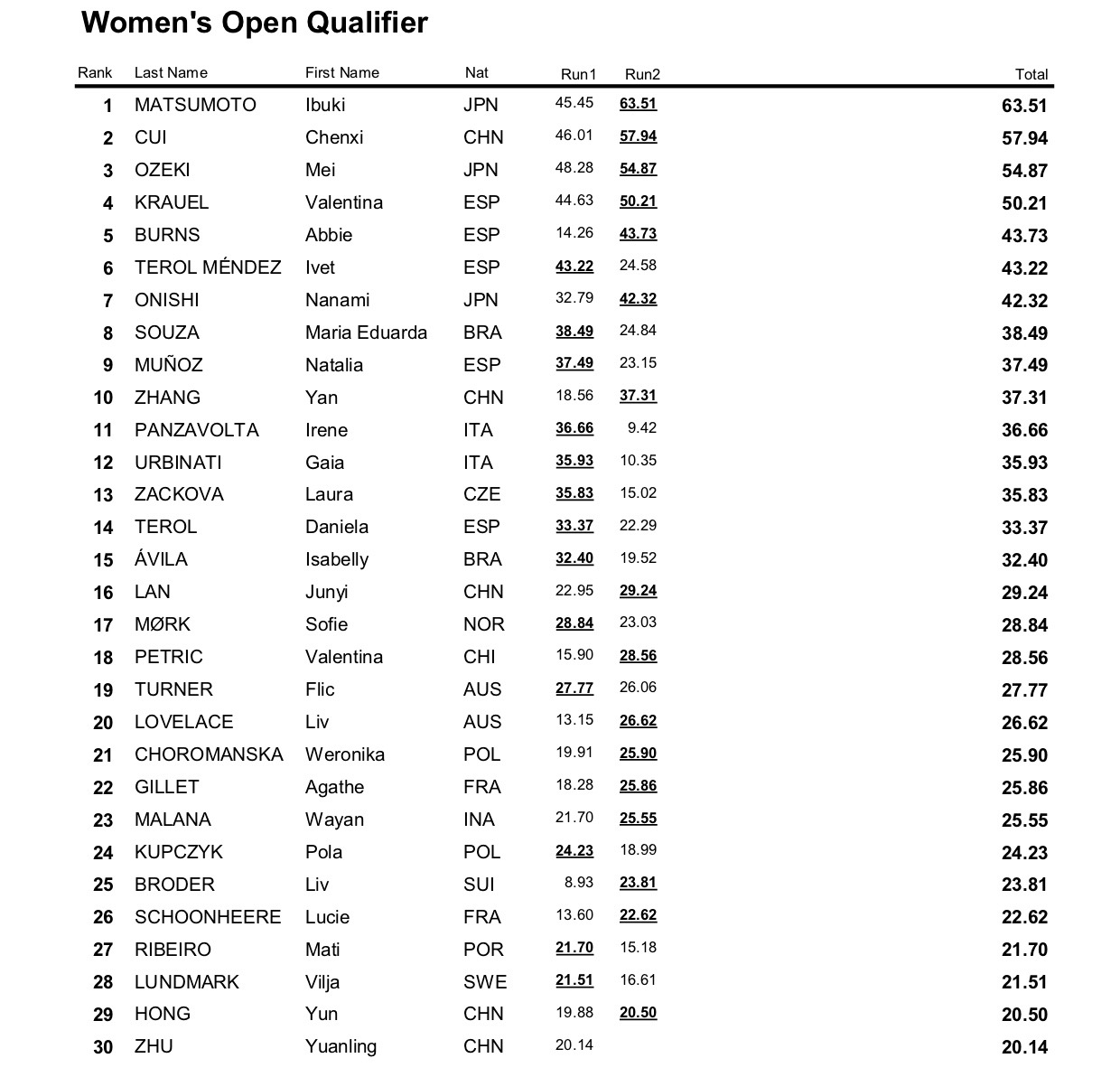
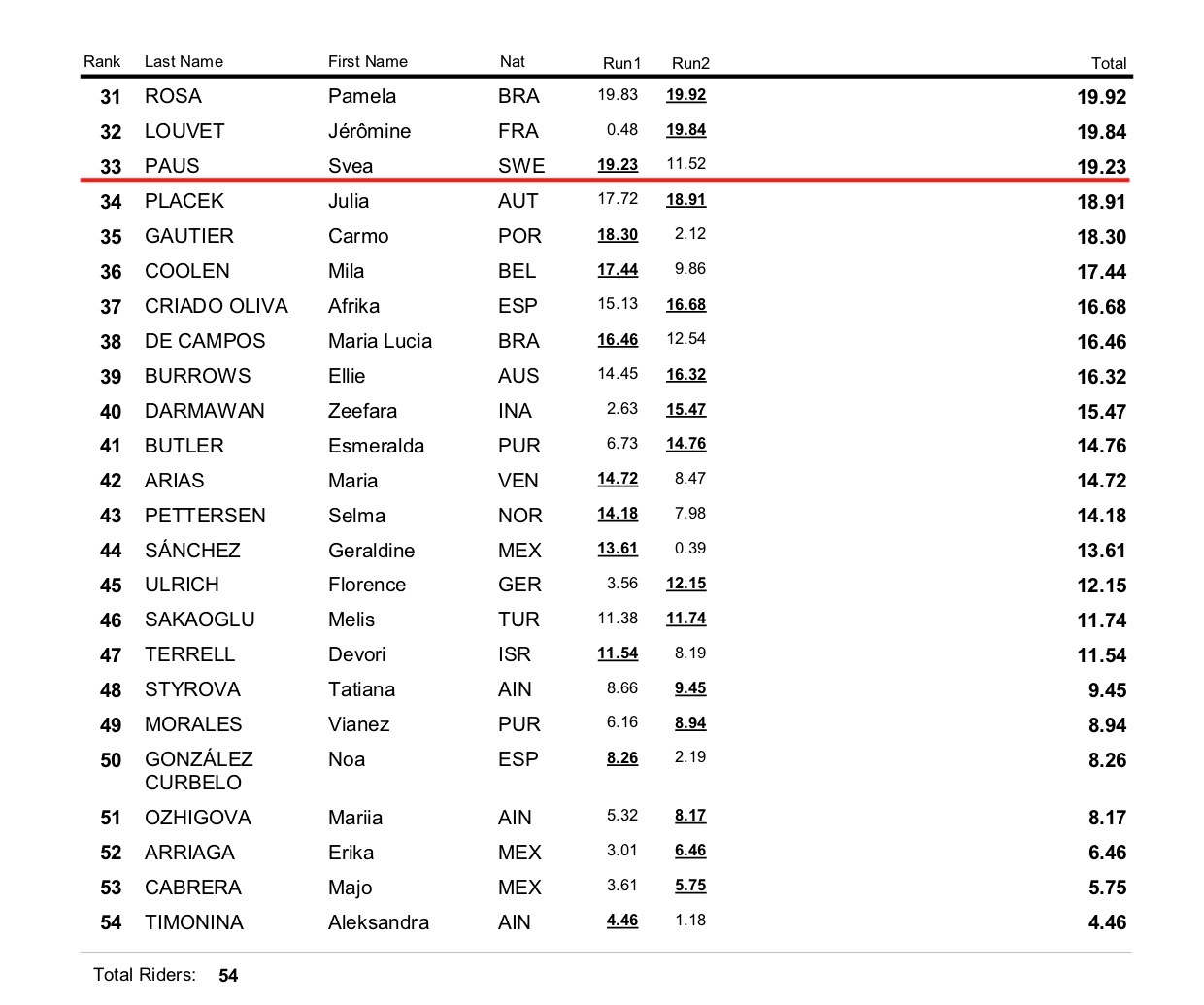
Thank you to each of the 54 of you who entered and gave of your best in challenging conditions; the top 32 here go through to meet our top 8 pre-seeded women in the quarterfinals on Friday.
Tomorrow sees the same for men- stay tuned! 
